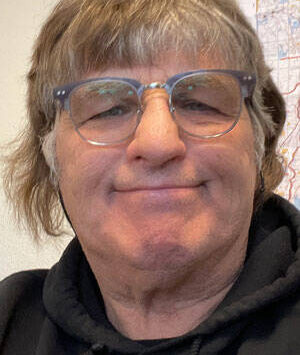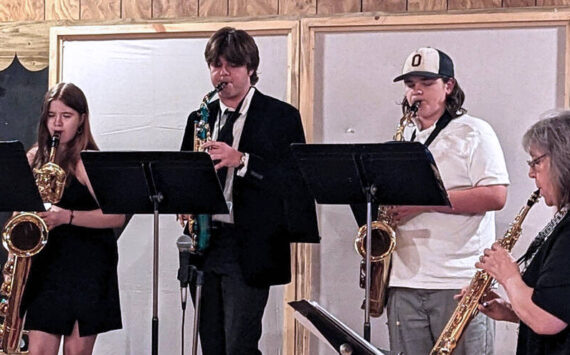Drill serves its purpose, exposes issues
TONASKET – The inability of first response personnel to communicate after leaving Tonasket and heading up Highway 20 is no secret. Anyone who has tried to use their cell phone while on the road knows this, as do ambulance, police and sheriff’s officers that have had to respond to emergencies while under what amounts to a communications blackout.
If there was one overarching theme that came out of last Tuesday’s multi-jurisdictional emergency drill, where a car/school bus collision and response was staged several miles east of Tonasket and at North Valley Hospital, it’s that the communications situation puts lives at risk.
While both Tonasket Emergency Medical Services Director Michael Greene and School District Superintendent Paul Turner were pleased with much of what transpired during the drill, most pressing concern both cited was the breakdown in communications.
Between the lack of radio transmission capacity in the breakdown of a separate transmitter put in place for the drill, “I was looking for some brush to burn for smoke signals,” Greene said.
“The communications just fell apart and made it pretty tough,” Turner said. “We need to put a plan together because it’s not just a school issue, it’s a county issue. We really need to get the county commissioners involved.”
The district has already been pondering the purchase of satellite phones for its bus drivers, who are regularly out of communications while on their routes up Highway 20 almost from the moment they leave the school parking lot.
“The drill really exposed how bad it is,” Turner said. “After talking with other entities, we all thought we had things set up so we could work with it. But the drill made it obvious how bad the situation really is.”
“Ambulances can’t talk to the hospital until they are less than five minutes out,” Greene said. “You don’t get communications until you come down past the school. We’ve known that we need to fix that. It’s an ongoing issue but now it’s moved to the front burner.”
He said that while most calls involve just one or two patients, something like a bus accident that might involve 30-40 children is a different animal altogether.
“When you are five minutes away and that’s when you tell the hospital you have 30 patients coming in, that’s a problem,” he said.
Greene said it didn’t quite come to resorting to smoke signals.
“We ended up using runners to communicate on the accident site,” said Greene, who was the incident commander. “We had a backup satellite phone on hand and we were able to communicate to our dispatch and through them with the hospital. But it wasn’t easy, and in a real life situation it wouldn’t be any better.”
The drill
The scenario involved a bus filled with students hit by a car (with the driver losing control due to texting while behind the wheel). Accident participants had been “made up” by Oroville EMS Director Debra Donahue to appear as injured.
Tonasket and Oroville EMS, Tonasket Fire, Okanogan County Sheriff, Tonasket Police and Airlift were among the first responders who assessed the “victims,” including two fatalities, five critical, four serious and 16 walking wounded.
Airlift landed at the site, though due to the realities of needing to be available for a real-life emergency “Had to wave a magic wand and heal the patients rather than transport them,” Greene said. “If only we could do that in real life.”
Patients were transported to North Valley Hospital (the most serious by ambulance, the walking wounded by a second school bus), where a mock Emergency Room was set up and hospital personnel took part in their own portion of the drill.
School district personnel were also involved at the accident site, at the school and at the hospital, as well as “parents” assigned to the student victims. Border Patrol and EMS personnel assisted the hospital with security
Multiple observers were also on hand to assess the drill as it was ongoing.
Greene said that despite the communications issues at the accident site, the first responders’ ability to navigate the situation surpassed expectations.
“We thought we’d get the patients to the hospital by about 9:50,” he said, as the drill began at about 9:00. “But we had some get there by 9:20.
“We had a lot of agencies there, probably 38 or 39 people on the scene. The big task was keeping all those people coordinated.”
Students and parents involved wore “Don’t Text and Drive” t-shirts to signify they were part of the drill, though others (including a certain reporter who for a time wasn’t wearing an observer’s vest and thus was three times ejected from the ER) got sucked into the proceedings regardless of the original plan.
“I have to commend the parents who were involved,” Turner said. “They did a great job of challenging us. We had one that was really aggressive and kept forcing her way to the emergency room. We had another that played a real passive role.”
He added that the wife of a hospital staff member even posed as a grandparent to add to the unpredictability of the scenario.
“She started by saying she was there for one kid who wasn’t on our list,” Turner said. “Then when she got hold of a kids name tried to tell us that no, she was there for that kid. But she wasn’t actually one of the ‘parents’ of anyone. It was the kind of weird thing you have to watch for in a chaotic situation. She threw some real curve balls at us.”
In the emergency room, further evaluation of the “patients” took place, as the kids involved (a combination of high schoolers from both the leadership class and the alternative school) acted out depending on their assigned injuries. Some were better actors than others; there was some screaming involved, one student who appeared to be OK other than a bump to the head suddenly slumped to the floor, prompting the ER crew to respond to an ever-changing situation.
Meanwhile, hospital and school personnel worked on “reunification” efforts between students and parents.
There was even an impromptu press conference held in the City Hall Chambers.
“We got good feedback,” Turner said. “We still are going to have a meeting with the hospital to debrief. I think we can do a better job with the reunification, but overall it was good. At the school, we need to work with a few of our procedures. The staff deserves some kudos for the way they worked through stuff.”
Greene said that pre-set goals for the drill were met, and that changes were already being implemented into EMS training.
“All the agencies worked well together,” he said. “We built relationships and strengthened new relationships. God forbid if we have a real incident like, but now we know each other, trust each other more, and know better how to work together.”
Turner said the training and what it revealed was invaluable.
“The biggest thing,” he said, “is bottom line, you have to be willing and able to improvise. The more knowledge and practice you have at that, the better.
“It takes a lot of energy, but it’s not a bad idea to do something like this once a year. We run 1,200 miles of bus routes in the morning and another 1,200 in the afternoon. We know what the odds are.”




